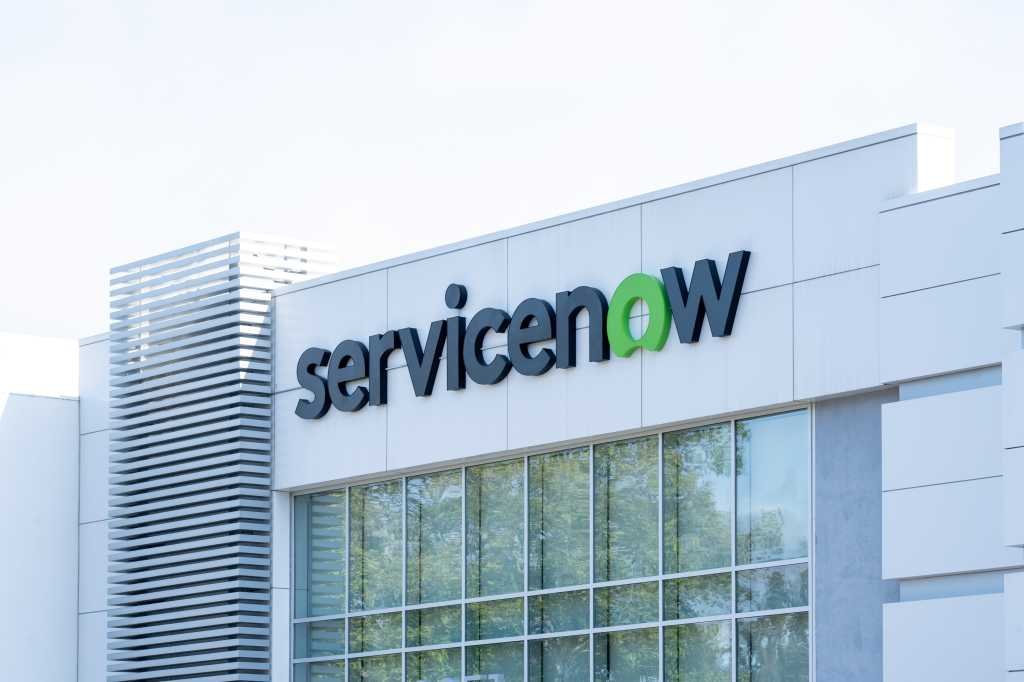AI Research
Human Vs Artificial Intelligence
While artificial intelligence is set to become more prominent, its management remains a key human challenge, especially for vulnerable communities. The text argues that true success and understanding do not stem from AI but from our human awareness of truth, which is shaped by our lived realities and institutions. This truth, exemplified by the voices of those suffering in conflict zones, is presented as far more authentic than any AI-generated content. However, it is still crucial to understand these tools to harness our own creative human intelligence. The goal is to transform threats into opportunities by creating our own tools, rather than becoming enslaved to those controlled by adversaries. This echoes the sentiment that we must preserve the human operating the machine, not become its slave. The ultimate reliance should be on resilient human ingenuity, not artificial intelligence.
AI Research
ServiceNow Zurich release introduces agentic AI to the platform

The user can even ask an agent, in natural language, to make changes or additions to a playbook if, for example, a step in a process is missing.
Despite these features, Moor Insights’ Kramer said that Zurich’s success will all come down to execution. “Zurich shows ServiceNow moving in the right direction: less dashboard fatigue, more actionable insights, and better integration with external data,” he said. “But the real test will be execution. If the AI summaries are accurate, if the integrations stay reliable, and if the UX actually reduces complexity, customers will see value. If not, it risks being another release that looks good in demos but frustrates in practice.”
He added, “Competitors like Microsoft, SAP and Salesforce are pushing similar ideas, so customers will have options. ServiceNow needs to prove that Zurich isn’t just riding the AI wave but actually making daily work smoother.”
AI Research
2025 State of AI Cost Management Research Finds 85% of Companies Miss AI Forecasts by >10%
Despite rapid adoption, most enterprises lack visibility, forecasting accuracy, and margin control around AI investments. Hidden infrastructure costs are eroding enterprise profitability, according to newly published survey data.
AUSTIN, Texas, Sept. 10, 2025 /PRNewswire/ — As enterprises accelerate investments in AI infrastructure, a new report reveals a troubling financial reality: most organizations can’t forecast what they’re spending, or control how AI costs impact margins. According to the 2025 State of AI Cost Management, 80% of enterprises miss their AI infrastructure forecasts by more than 25%, and 84% report significant gross margin erosion tied to AI workloads.
The report, published by Benchmarkit in partnership with cost governance platform Mavvrik, reveals how AI adoption, across large language models (LLMs), GPU-based compute, and AI-native services, is outpacing cost governance. Most companies lack the visibility, attribution, and forecasting precision to understand where costs come from or how they affect margins.
“These numbers should rattle every finance leader. AI is no longer just experimental – it’s hitting gross margins, and most companies can’t even predict the impact,” said Ray Rike, CEO of Benchmarkit. “Without financial governance, you’re not scaling AI. You’re gambling with profitability.”
Top Findings from the 2025 State of AI Cost Management Report include:
AI costs are crushing enterprise margins
- 84% of companies see 6%+ gross margin erosion due to AI infrastructure costs
- 26% report margin impact of 16% or higher
The great AI repatriation has begun
- 67% are actively planning to repatriate AI workloads; another 19% are evaluating
- 61% already run hybrid AI infrastructure (public + private)
- Only 35% include on-prem AI costs in reporting, leaving major blind spots
Hidden cost surprises come from unexpected places
- Data platforms top source of unexpected AI spend (56%); LLMs rank 5th
- Network access costs is the second-largest cost surprise (52%)
AI forecasting is fundamentally broken
- 80% miss AI forecasts by 25%+
- 24% are off by 50% or more
- Only 15% forecast AI costs within 10% margin of error
Visibility gaps are stalling governance
- Lack of visibility is the #1 challenge in managing AI infrastructure costs
- 94% say they track costs, but only 34% have mature cost management
- Companies charging for AI show 2x greater cost maturity in attribution and cost discipline
Access the full report: The full report details how automation, cost attribution methods, and cloud repatriation strategies factor into AI cost discipline. To view the analysis, please visit: https://www.mavvrik.ai/state-of-ai-cost-governance-report/
“AI is blowing up the assumptions baked into budgets. What used to be predictable, is now elastic and expensive,” said Sundeep Goel, CEO of Mavvrik. “This shift doesn’t just affect IT, it’s reshaping cost models, margin structures, and how companies scale. Enterprises are racing to build with AI, but when most can’t explain the bill, it’s no longer innovation, it’s risk.”
Why It Matters
AI isn’t just a technology challenge, it’s a financial one. From LLM APIs to GPU usage and data movement, infrastructure costs are scaling faster than most companies can track them. Without clear attribution across cloud and on-prem environments, leaders are making pricing, packaging, and investment decisions in the dark.
With AI spend becoming a significant line in COGS and gross margin targets under pressure, CFOs should be sounding the alarm. Yet most finance teams haven’t prioritized governance.
About the State of AI Cost Management
The 2025 State of AI Cost Management report is based on survey results from 372 enterprise organizations across diverse industries and revenue tiers. It measures cost governance maturity, spanning forecast accuracy, infrastructure mix (cloud vs. on–prem), attribution capability, and gross margin impact. https://www.mavvrik.ai/.
About Mavvrik
Mavvrik is the financial control center for modern IT. By embedding financial governance at the source of every cost signal, Mavvrik provides enterprises with complete visibility and control across cloud, AI, SaaS, and on-prem infrastructure. Built for CFOs, FinOps, and IT leaders, Mavvrik eliminates financial blind spots and transforms IT costs into strategic investments. With real-time cost tracking, automated chargebacks, and predictive budget controls, Mavvrik helps enterprises reduce waste, govern AI and hybrid cloud spend, and maintain financial precision at scale. Visit www.mavvrik.ai to learn more.
Media Contact:
Rick Medeiros
510-556-8517
[email protected]
SOURCE Mavvrik

AI Research
I’ve been researching generative AI for years, and I’m tired of the consciousness debate. Humans barely understand our own

In 2022, a Google engineer claimed one of the company’s AIs was sentient. He lost his job, but the story stuck. For a brief moment, questions of machine consciousness spilled out of science fiction and into the headlines.
Now, in 2025, the debate has returned. As the release of GPT-5 was overshadowed by public nostalgia for GPT-4o, it was everyday users who began acting as if these systems were more than their makers intended. Into this moment stepped another tech giant: Mustafa Suleyman, CEO of Microsoft Research, declaring loud and clear on his blog that AI is not, and will never be, conscious.
At first glance, it sounds like common sense. Machines obviously aren’t conscious. Why not make that abundantly clear?
Because it isn’t true.
The hard fact is that we do not understand consciousness. Not in humans, not in animals, and not in machines. Theories abound, but the reality is that no one can explain exactly what consciousness is, let alone how to measure it. To state with certainty that AI can never be conscious is not science, it isn’t caution. It’s overconfidence, and in this case, a thinly veiled agenda.
If AI can’t ever be conscious, then companies building it have nothing to answer for. No unsettling questions. No ethics debates. No pressure. Surely, it would be nice if we could claim with full confidence that the consciousness question is not relevant to AI. But convenience doesn’t make it true.
What troubles me most is the tone. These pronouncements aren’t just misleading, they’re also infantilizing. As if the public can’t handle complexity. It is as though we must be shielded from ambiguity, spoon-fed tidy certainties instead of being trusted with reality.
Yes, people falling in love with and marrying chatbots or preferring AI companions to human ones is concerning. It unveils a deeper pattern of loneliness and disconnection. This is a social and psychological challenge in its own right, and one we should take seriously. The rise of digital companions reveals how hungry people are for connection.
But the real issue isn’t that some people believe AI might be conscious. The deeper problem is our growing overreliance on technology in general—an addiction that stretches back long before the current debate on machine consciousness. From social media feeds to video games targeting children, technology has a long history of prioritizing engagement and fostering addiction, with no regard for the well-being of its users.
But technological dysfunction won’t be solved by feeding people false assurances about what machines can or cannot be. If anything, denial only obscures the urgency of confronting our dependence head-on.
We need to learn to live with uncertainty. Because uncertainty is the reality of this moment.
Suleyman did add an important caveat: our attention should be on the beings we already know are conscious—humans, animals, the living world. On this point, I couldn’t agree more. But look at our record. Billions of animals endure extreme suffering in factory farms on a daily basis. Forests are flattened for profit, numerous species gone extinct. And in the age of AI, the use case most celebrated by investors is replacing human labor.
The pattern is clear. Again and again, we minimize the experiences of those who aren’t like us, those we would benefit from exploiting. We claim animals don’t suffer all that much or simply turn a blind eye. We treat nature as expendable. We routinely devalue people whose exploitation benefits our economic system. Now, we rush to declare that AI will never be conscious. Same playbook, new page.
So no, we shouldn’t blindly trust the builders of AI to tell us what is and isn’t conscious, any more than we should trust meat factories to tell us about the experience of cows.
The reality is messier. AI may never be conscious. It may surprise us. We cannot say for certain. And we might not be able to tell whether it is conscious even if it does happen. And that is the point.
For a long time, I avoided this topic. Consciousness felt too slippery, too strange. But I’ve come to see that acknowledging our uncertainty is not a weakness. It is a strength.
Because in an era of false certainties, honesty about the unknown may be the most radical truth we have.
The opinions expressed in Fortune.com commentary pieces are solely the views of their authors and do not necessarily reflect the opinions and beliefs of Fortune.
-

 Business2 weeks ago
Business2 weeks agoThe Guardian view on Trump and the Fed: independence is no substitute for accountability | Editorial
-
Tools & Platforms4 weeks ago
Building Trust in Military AI Starts with Opening the Black Box – War on the Rocks
-

 Ethics & Policy1 month ago
Ethics & Policy1 month agoSDAIA Supports Saudi Arabia’s Leadership in Shaping Global AI Ethics, Policy, and Research – وكالة الأنباء السعودية
-

 Events & Conferences4 months ago
Events & Conferences4 months agoJourney to 1000 models: Scaling Instagram’s recommendation system
-

 Jobs & Careers2 months ago
Jobs & Careers2 months agoMumbai-based Perplexity Alternative Has 60k+ Users Without Funding
-

 Podcasts & Talks2 months ago
Podcasts & Talks2 months agoHappy 4th of July! 🎆 Made with Veo 3 in Gemini
-

 Education2 months ago
Education2 months agoMacron says UK and France have duty to tackle illegal migration ‘with humanity, solidarity and firmness’ – UK politics live | Politics
-

 Education2 months ago
Education2 months agoVEX Robotics launches AI-powered classroom robotics system
-

 Funding & Business2 months ago
Funding & Business2 months agoKayak and Expedia race to build AI travel agents that turn social posts into itineraries
-

 Podcasts & Talks2 months ago
Podcasts & Talks2 months agoOpenAI 🤝 @teamganassi

